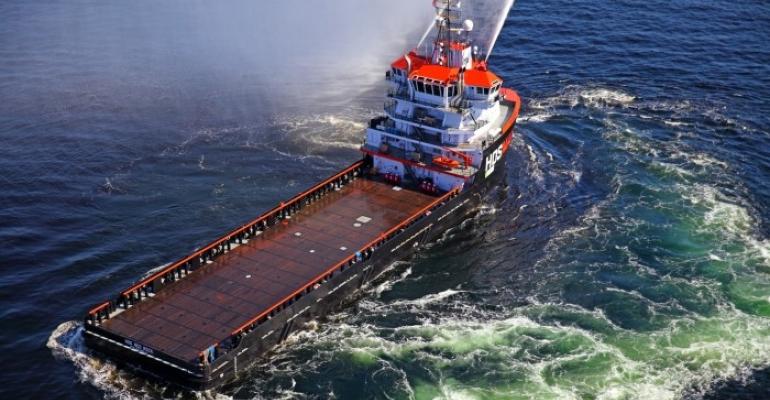At the recent Workboat convention and conference in New Orleans the session on markets for OSVs, featured Matthew Rigdon, the executive vice president/Chief Operating Officer of Jackson Offshore Operators LLC, who discussed the current situation for boats in US waters, which means the Gulf of Mexico.
Like deepwater shipping, this subset of the larger OSV sector (where vessels are Jones Act compliant) exhibits the fundamental underlying tendencies towards oversupply as does other OSV geographies. Importantly, however, the sector is less fragmented than markets such as deepsea tankers, and this concentration allows the important players to actually gather together “in the same room”, at least figuratively.
Rigdon presented the OSV industry version of supply/ demand calculations. In contrast to the deepsea calculations of market utilization (where “laid up” vessels are still counted as part of the fleet) the OSV methodology, used by throughout the sector, takes the “stacked” (laid up) vessels out of the equation. The rationale is that “cold stacked” boats take many months to reactivate.
Demand of approximately 45 OSVs in the 4,000 dwt and above category, based on approximately 20 deepwater drilling rigs deployed in the US Gulf, is contrasted with a supply of 100 domestic OSVs, netted for those who fled to international waters) with 26 “stacked” units removed from the supply. The effective utilisation works out to something like 73%. At present, the daily hires on such boats are around $15,000 per day- about half of the all-in daily cost.
For tanker and dry cargo markets, the analysts draw supply curves that turn vertical, a necessary ingredient of sharp volatility, at 90% utilisation and above with laid up vessels included in the supply. As the price of oil vacillates widely, this is crunch time for the OSV business. Rigdon noted that “When effective utilisation [using the OSV methodology] gets to 70%, pricing power begins to return.” In response to a question, he suggested that re-activation of stacked equipment requires a lengthy timeframe.
Costs begin to butt up against emotions, perhaps, when it comes to drydocking underscoring the key message of the talk. Citing fleet data, Rigdon pointed to a high proportion of boats needing to be drydocked and put out of service in 2019.
After explaining that present hires do not cover drydocking costs, he implored boat owners to think very carefully about making drydock expenditures, presumably dipping into cash resources, or borrowing to finance them, and keeping the boats in service.
If owners of these big OSV’s “can act rationally” which he acknowledged to be a “big if” - then they would “stack” vessels, postponing drydocking for better times, and boosting the effective utilisation up towards 80% a number even a dry bulk or tanker guy might like.
Copyright © 2024. All rights reserved. Seatrade, a trading name of Informa Markets (UK) Limited.
Add Seatrade Maritime News to your Google News feed.  |


